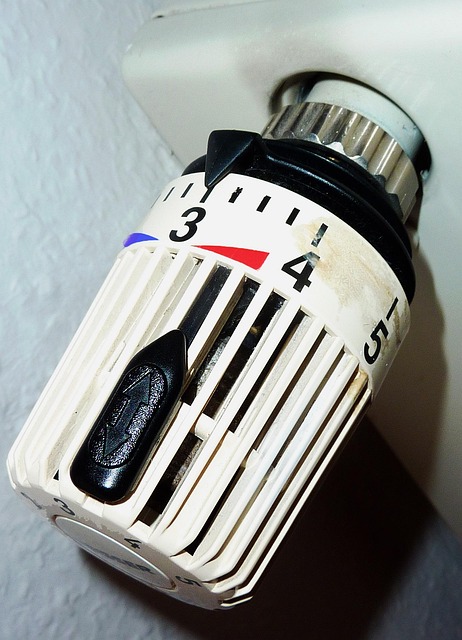Understanding Home Heating Systems and Energy Efficiency
Home heating systems play a vital role in maintaining comfort during colder months, but many homeowners remain uncertain about which options best suit their needs. With advancements in heating technology and growing emphasis on energy efficiency, understanding the various systems available and their benefits has become increasingly important. This article explores how modern heating solutions can enhance comfort, reduce energy consumption, and provide long-term savings for households across the country.

Selecting the right heating system for your home involves understanding multiple factors, from system types to efficiency ratings and installation considerations. As energy costs continue to fluctuate and environmental concerns grow, homeowners are increasingly seeking solutions that balance comfort with sustainability. Modern heating technology offers numerous options designed to meet diverse needs while minimizing environmental impact and operational expenses.
How a Central Heating System Improves Home Comfort
Central heating systems distribute warmth throughout an entire home from a single source, providing consistent temperature control across all rooms. Unlike localized heating methods, central systems eliminate cold spots and drafts by circulating heated air or water through ducts or radiators. This uniform distribution creates a more comfortable living environment, particularly in larger homes or multi-story buildings.
Modern central heating systems feature programmable thermostats and zoning capabilities, allowing homeowners to customize temperatures in different areas based on usage patterns. These systems also operate more quietly than older models, reducing noise disruption while maintaining optimal comfort levels. The ability to control heating remotely through smart technology adds another layer of convenience, enabling temperature adjustments from anywhere.
The Benefits of Upgrading to Energy-Efficient Heating
Energy-efficient heating systems offer significant advantages beyond reduced utility bills. High-efficiency furnaces and heat pumps convert a greater percentage of fuel into usable heat, minimizing waste and lowering carbon emissions. Systems with ENERGY STAR certification typically operate 15-30% more efficiently than standard models, translating to substantial savings over time.
Upgrading to energy-efficient heating also improves indoor air quality through advanced filtration systems that remove dust, allergens, and pollutants. Modern units operate more reliably with fewer breakdowns, reducing maintenance costs and extending equipment lifespan. Additionally, many utility companies and government programs offer rebates or incentives for installing energy-efficient systems, further offsetting initial investment costs.
Understanding Different Types of Home Heating Systems
Homeowners can choose from several heating system types, each with distinct characteristics and applications. Forced-air furnaces remain the most common option, using gas, oil, or electricity to heat air distributed through ductwork. These systems heat homes quickly and can integrate with central air conditioning for year-round climate control.
Heat pumps transfer heat rather than generate it, making them highly efficient in moderate climates. They function as both heating and cooling systems, reversing their operation seasonally. Boiler systems heat water or steam distributed through radiators or radiant floor systems, providing gentle, consistent warmth without air circulation. Ductless mini-split systems offer flexible installation options for homes without existing ductwork, allowing individual room control.
Radiant floor heating systems embed heating elements beneath flooring materials, delivering warmth from the ground up. This method provides exceptional comfort and efficiency but requires significant installation investment. Hybrid systems combine multiple technologies, such as pairing a heat pump with a furnace backup, optimizing efficiency across varying weather conditions.
What to Consider Before Installing a New Heating Unit
Several critical factors influence heating system selection and installation success. Home size and layout determine the capacity requirements, measured in BTUs (British Thermal Units). An undersized system struggles to maintain comfort, while an oversized unit cycles inefficiently, wasting energy and reducing equipment lifespan.
Climate plays a significant role in system suitability. Heat pumps perform exceptionally well in mild climates but may require supplemental heating in regions with harsh winters. Fuel availability and costs vary by location, affecting long-term operational expenses. Homes with natural gas access typically benefit from gas furnaces, while electric heat pumps suit areas with lower electricity rates.
Existing infrastructure impacts installation complexity and costs. Homes with ductwork can accommodate forced-air systems more easily, while those without may benefit from ductless or radiant options. Insulation quality and window efficiency affect heating demands, making energy audits valuable before system selection. Professional load calculations ensure proper sizing, preventing common installation mistakes.
How to Reduce Energy Costs with Modern Heating Technology
Modern heating technology incorporates numerous features designed to minimize energy consumption without sacrificing comfort. Variable-speed blowers adjust airflow based on heating demands, operating more efficiently than single-speed models. Modulating burners fine-tune heat output, maintaining consistent temperatures while reducing fuel consumption.
Smart thermostats learn household patterns and automatically adjust temperatures for optimal efficiency. These devices can detect occupancy, reduce heating when homes are empty, and provide detailed energy usage reports. Zoning systems divide homes into separate heating areas, directing warmth only where needed and avoiding waste in unused spaces.
Regular maintenance significantly impacts system efficiency. Annual professional inspections ensure proper operation, while simple tasks like filter replacement improve airflow and reduce energy demands. Sealing ductwork prevents heat loss, and upgrading insulation reduces the workload on heating systems. Combining efficient equipment with proper home weatherization maximizes energy savings and comfort.
Conclusion
Selecting and maintaining an appropriate heating system requires careful consideration of home characteristics, climate conditions, and efficiency priorities. Modern heating technology offers diverse options capable of delivering superior comfort while reducing energy consumption and environmental impact. By understanding system types, efficiency benefits, and installation factors, homeowners can make informed decisions that provide long-term value. Investing in energy-efficient heating not only lowers operational costs but also contributes to a more sustainable future while ensuring reliable comfort throughout the coldest months.



